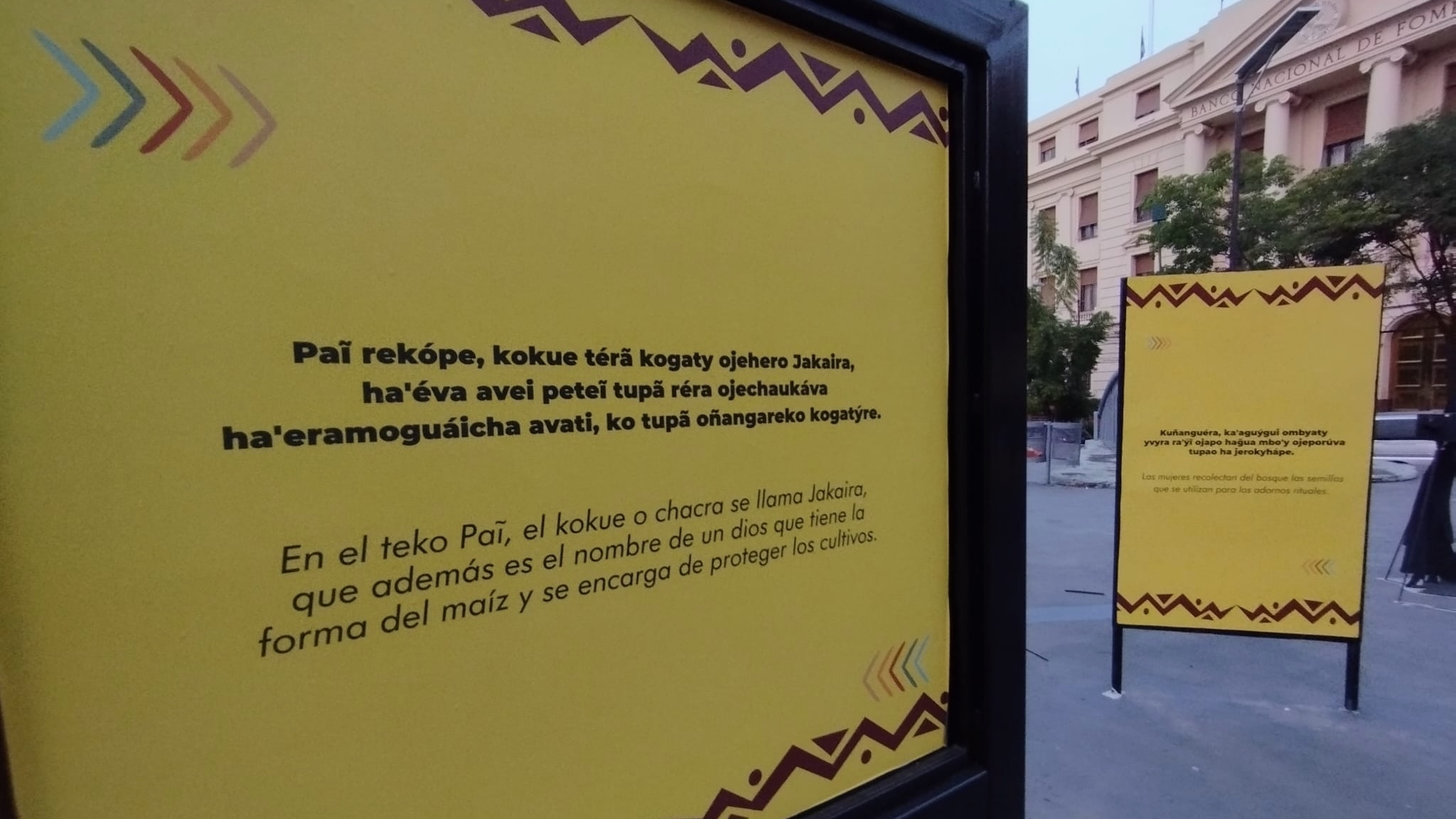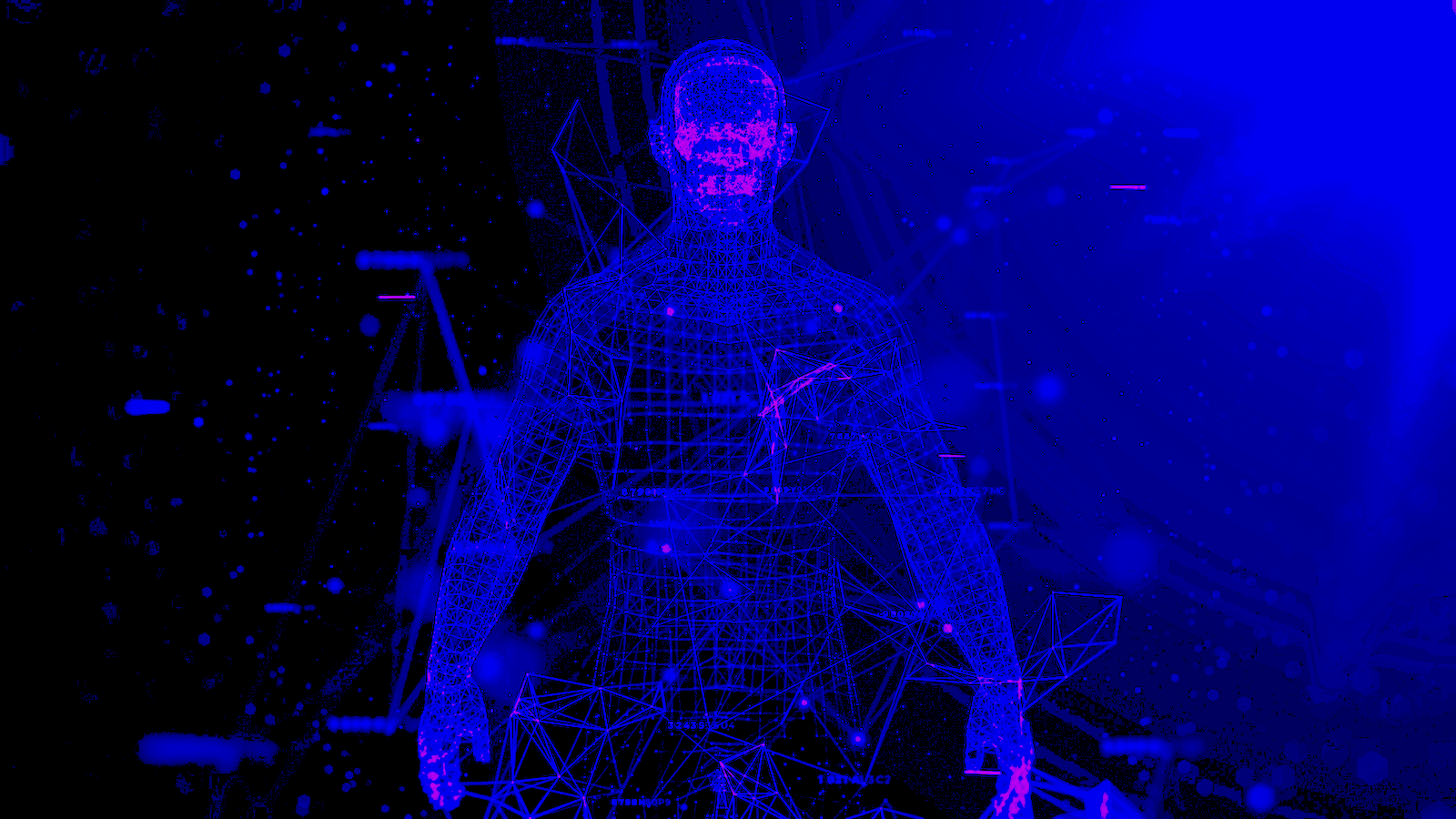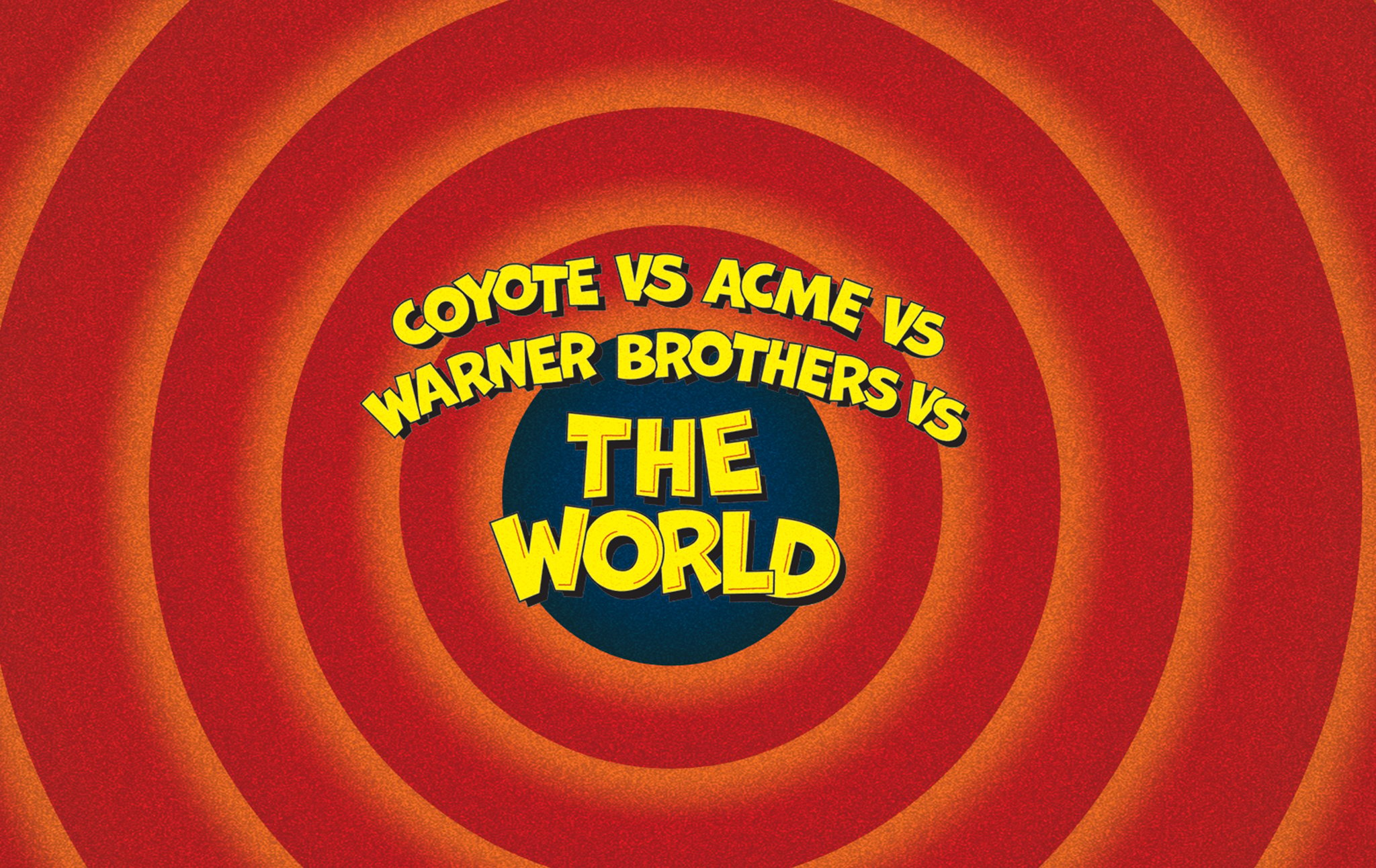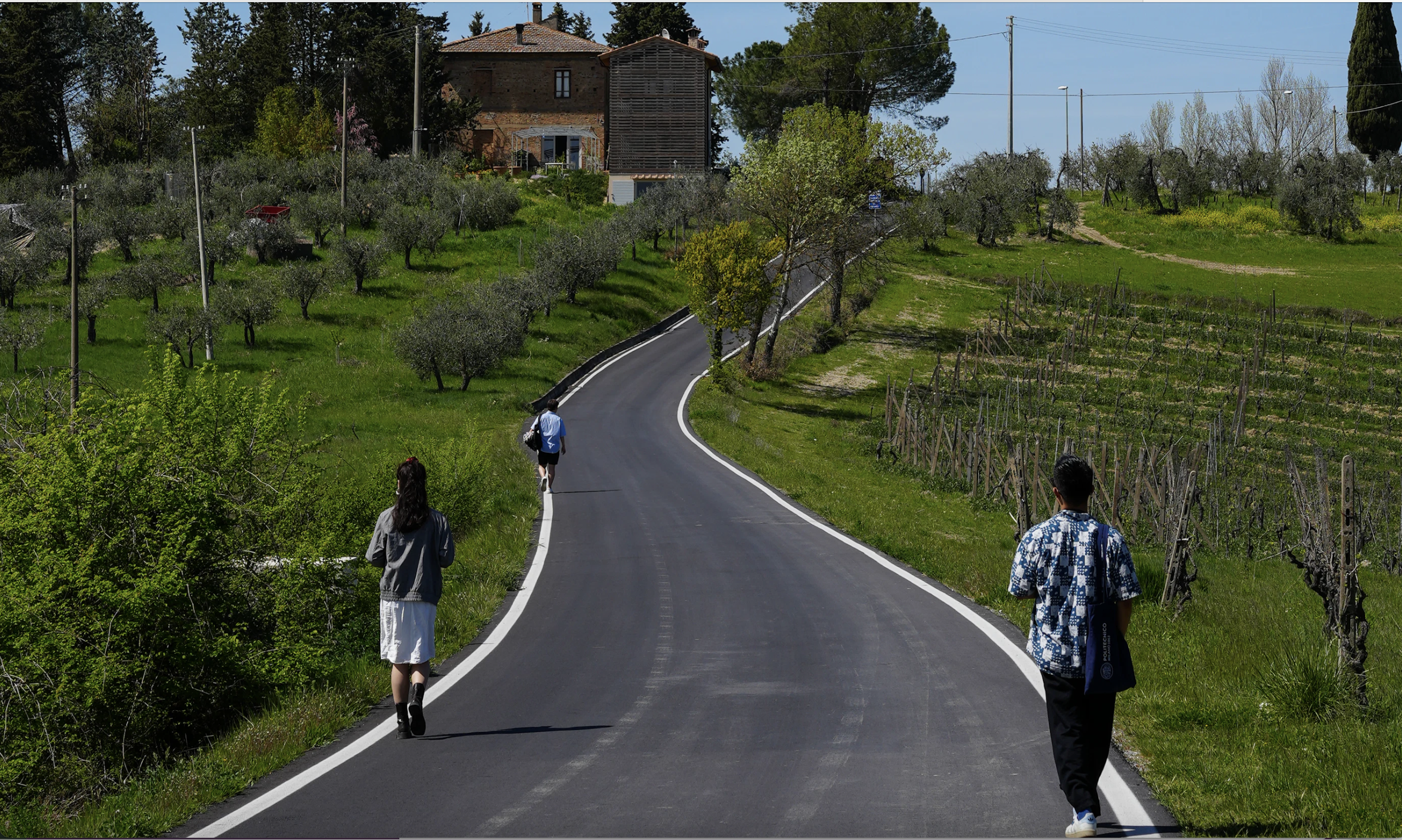Humanities & Cultures
 www.newyorker.com
www.newyorker.com
[archive.is link](https://archive.ph/6xxfF) > **After the war in Gaza started and there were all these civilian casualties, we saw Israel intentionally denying humanitarian aid to people who were starving. What should the response from people have been at that point?** > > That’s not something I can say because I don’t know what my own response should have been. I trusted no one and I trusted no report. That doesn’t mean that I didn’t see some pictures on television. The BBC has been appalling. It just showed you pictures, unbearable pictures, heartbreaking pictures of dying babies every night, but any war would look appalling if you just showed the suffering of the women and children. > > So, I thought, Who am I to believe here? I read a lot of people; I believed some, and I didn’t believe others. It’s turned out very badly and the right-wing government of Benjamin Netanyahu is contemptible. I have no doubt about all that, but that didn’t mean that something didn’t need doing. There was no alternative to it. Israel had to try and get Hamas. I thought Netanyahu’s belief that he could wipe out Hamas was stupid. So I felt that this war had to be prosecuted. If a war is prosecuted, it will be ugly. > **I asked you about the specific intentional denial of humanitarian aid, and your answer was something like “Well, I don’t know what to believe anymore when I read the news, so I can’t really comment on that.” Is that right?** > > Put quite like that it sounds as though what I said was stupid and ignorant. One got accounts and accounts and accounts and it was very hard to know what was the truth. --- > **So you’re saying the idea that twelve hundred Israelis were killed and now forty-two thousand Gazans have been killed—that comparing the two in itself is not any sort of argument?** > > Well, all right, Isaac, what’s the figure you’d choose? > > **I was just trying to clarify what you meant.** > > I don’t know how you do the mathematics of this, and I’m not going to say the “mathematics of revenge” because, while of course there was an element of revenge, and you wanted it not to be revenge, you didn’t want it to be a punishment either. I hated that word—“punishment.” I think the justification for what Israel did was to try to make sure that this never happened again. And I think in the attempt to make sure that this never happened again, the numbers were going to inevitably have to be high. If you’re a terrorist, you do hide yourself in schools and hospitals. So if the Israelis are going to get you, they’re going to have to attack those things. --- > Why should this be a matter of numbers? I’m not saying that the media should underestimate the number of Palestinian children killed. It’s a question of whether you choose to lead every story with children killed. Forty-five children were killed today. Thirty children were killed today. Fifteen children were killed today. It became an obsession. It became, and still is. > > **What should be the lead story on days when lots of children are killed?** > > I’m not talking about those days. This was every single night. I’m telling you I saw a dead baby every single night. You couldn’t look at a child, pictures of a child being killed every single night without thinking this is making my people, my kin, out to be child murderers. I’ve got two options for you. I can believe it’s true. O.K., it’s true. It’s true. That’s what we do. That’s what the Israelis, not us, but the Israelis, do. But we feel a kinship with the Israelis. That’s what they do. And so maybe there we are again. Maybe everything that they said about us in 1200 and 1300 was true. This is what the Jews do—kill children. I’m not going to buy it. I’m not going to buy it. > > **Howard, I think maybe we’re in a bit of a worrisome place if you see photos of dead children on television and your first thought is, They’re trying to make me, a Jew, hate my people.**
 www.semafor.com
www.semafor.com
> As horrific details about Oct. 7 spread last year, higher-ups at media companies debated whether they should join the chorus of corporations releasing statements condemning the attack. > > [...]Ultimately, the company’s statement pleased no one. Condé was one of the only news media companies to explicitly condemn Hamas in its statement. But some staff leaked to the New York Post their complaints that it didn’t go far enough. “People are pissed because it was a terrorist attack and Stan’s note is like, ‘Oh, both sides are being hurt,’” a Condé Nast insider told the Post, referring to a memo sent by the company’s head of human resources. --- > As the war intensified after Oct. 7, [Teen Vogue] ran sympathetic pieces pointing out the impact of military action on Palestinian civilians in Gaza, and how the conflict was playing out in the 2024 presidential campaign. It chronicled the crackdown on anti-Israel protests across college campuses in the US, as well as the celebrities who have come out in support of the Palestinians or a general ceasefire. > > Teen Vogue’s pro-Palestinian bent has particularly irritated the talent booking side of the business, which has taken issue with some of the writing and told other staff within the company that it is damaging relationships with celebrities. Earlier this year, Vogue entertainment director Sergio Kletnoy sent an email to Wintour, CEO Roger Lynch and Duncan that was deeply critical of Teen Vogue’s writing about Gaza. In February, Siri Garber, the president of Platform Public Relations, a Hollywood PR agency that represents celebrities who have been on Teen Vogue covers, sent a private letter to Condé Nast criticizing Teen Vogue’s coverage.
> Regardless of whether they are ‘self made’ or ‘second gen’, the ultra-rich have unique psychological profiles amongst the general populace. In my experience, both categories of billionaire are dominated by interminable existential crises — although each displays nuance when it comes to confrontation. The ‘self made’ have a tendency towards aggressive megalomania, while ‘second gens’ demur in favour of nihilistic hedonism. > > My main observation is that for individuals born into extreme wealth, it is almost impossible to grasp anything about material or social reality. In Gatsby, Fitzgerald describes rich people as “clumsy” — instinctively “retreating into their money” to avoid ever facing the outcomes of their actions. This is certainly true for second gens. To inherit a condition of unjustifiable wealth means to never experience cause and effect. All external pressures are alleviated by capital: there are no consequences to missing a deadline, to not finishing a project, to dropping out or giving up. It is terrifically difficult to fail, in any normal sense. --- > When they travel, the ultra-rich do so through private means. The car takes them to the aerodrome, where the plane takes them to another aerodrome, where a car takes them to the destination (with perhaps a helicopter inserted somewhere). Every journey is bookended by identical Mercedes Vito Tourers (gloss black, tinted windows). Every flight is within the cosy confines of a Cessna Citation (or a King Air or Embraer). The amenities (even the menus) are identical in Marrakech, Monaco and the Maldives; in Como, St. Kitts, Zermatt and Oman. The ultra-rich never wait in line at a carousel or a customs table or a passport control. There are no accidental encounters. No unwelcome, unapproved or unsanitary humans enter their sight – no souls that could espouse a foreign view. The ultra-rich do not see anything they do not want to see. More accurately: these people simply do not see.
 msmagazine.com
msmagazine.com
> I spend a lot of time listening to young and adult men in workplaces, schools, online and beyond. Among the questions I often ask is what gives them purpose. The young men who can’t answer seem to be the most lost, spending too much time online, often sunk in despair or filling their hours with looksmaxxing (the online and influenced-fueled trend of maximizing physique and looks), porn or another pursuit that fills their time but not their soul. > > For those who can cite a purpose, the list usually centers on a few things. One is friendship—breaking the often emotionally superficial ways that boys are taught to interact with, finding someone who understands and connects with them.Another is a job or vocation that brings a sense of connection, completion and accomplishment—not easy to find in a warehouse, delivery job or an untenable hourly wage at a fast-food joint. Employers who truly care about keeping young men and women have figured out they need to offer more. > > But the topic that makes men’s eyes shine when they talk about purpose, is caring for someone. Caring for an elderly parent. Caring for a spouse or intimate partner. Caring about their children or those in their household. Caring about the clients or patients they serve in a care-focused profession.
 restofworld.org
restofworld.org
> Zanjani’s YouTube channel launched in 2016. Since then, a vibrant network of soothsayers, psychics, numerologists, and palm readers has developed on the platform, with several commanding millions of views and hundreds of thousands of subscribers. These include Samiah Khan, the field’s Lahore-based grand doyenne; Sadia Arshad, who doubles as a hypnotherapist; and Humayun Mehboob, based in Karachi, whose videos often forewarn viewers of coming conflict. In the Muslim-majority nation, the rise of the YouTube astrologers has caused consternation among Islamic scholars and clerics who call the practice heterodox or even a form of shirk, or idolatry, in which predictions about the future are seen as claims to God’s omniscience. Astrologers, meanwhile, have used their growing visibility to reframe the narrative. Zanjani argues that astrology is not a break from Islamic tradition but an essential part of it. Far from claiming omniscience, he contends, astrologers are following God’s will by helping people who are struggling. > > Amid a widespread sense of economic, political, and environmental precariousness, many of the Pakistanis turning to digital astrologers seem to be seeking a sense of assurance. Since just 2022, a prime minister has been controversially removed from office and subsequently imprisoned, catastrophic floods have ravaged vast areas, and the value of the rupee has steadily fallen. The astrologers’ audiences are looking for clarity, not about the distant past or the afterlife but about the uncertain present and what might be immediately forthcoming. > > But their growing popularity raises the question of whether they’re offering something uniquely suited to helping Pakistanis with their anxieties or creating content with broader appeal but perhaps less depth. As the astrologers work to make their practice more palatable to Muslim viewers, they’re also moving closer toward the realm of the spiritual guides who have long been popular in the country — many of whom have drawn criticism for hucksterism.
 aeon.co
aeon.co
>When providers and researchers are able-bodied while patients are disabled, the chasm in lived experience, motivation and immersion in every last nuance of a condition can often be vast. In medicine, the traditional model for researching disabilities repeats itself again and again: nondisabled researchers conduct their studies ‘on’ disabled people as their subjects. While there may be nothing inherently wrong with this mode of scholarship, it carries limitations that should be acknowledged. The fact is: patients can have different priorities from clinicians. They can see things that clinicians may not recognise because they accrue vital first-person knowledge that comes from living with disability or illness. And they are most certainly stakeholders in the research outcome of their own disease. --- > Given all this, it makes sense to encourage more active patient voices in clinical research. As co-investigators, patients could offer unique insights into their health conditions and ask penetrating questions about treatments and policies. They could help focus practical attention on the development of more inclusive and effective health and social interventions. > > While this all sounds great in theory, is there any evidence that healthcare could do a better job if it harnessed the insights and expertise of patients? Patient-researchers are still a novel idea in academia, but emerging evidence shows they offer insights that enhance clinical knowledge. One study in oncology found that investing in patient co-investigators in the design and conduct of clinical trials yielded a 500-fold return. This was because patients offered recommendations that improved enrolment, adherence and retention of participants. --- > Mindsets need to change, too. In academia, governing boards, faculty and administrators should become more aware of the needs of disabled students and researchers. Efforts to accommodate and include disabled people, even in what might be perceived as the smallest of ways, could go towards encouraging and sustaining students and scholarship. We also need more cooperation between universities, governments, disability organisations and funders. Many international DEI charters in higher education and research focus on gender and race, but people with disabilities are too often the forgotten, marginalised group treated as irrelevant or unworthy of attention.
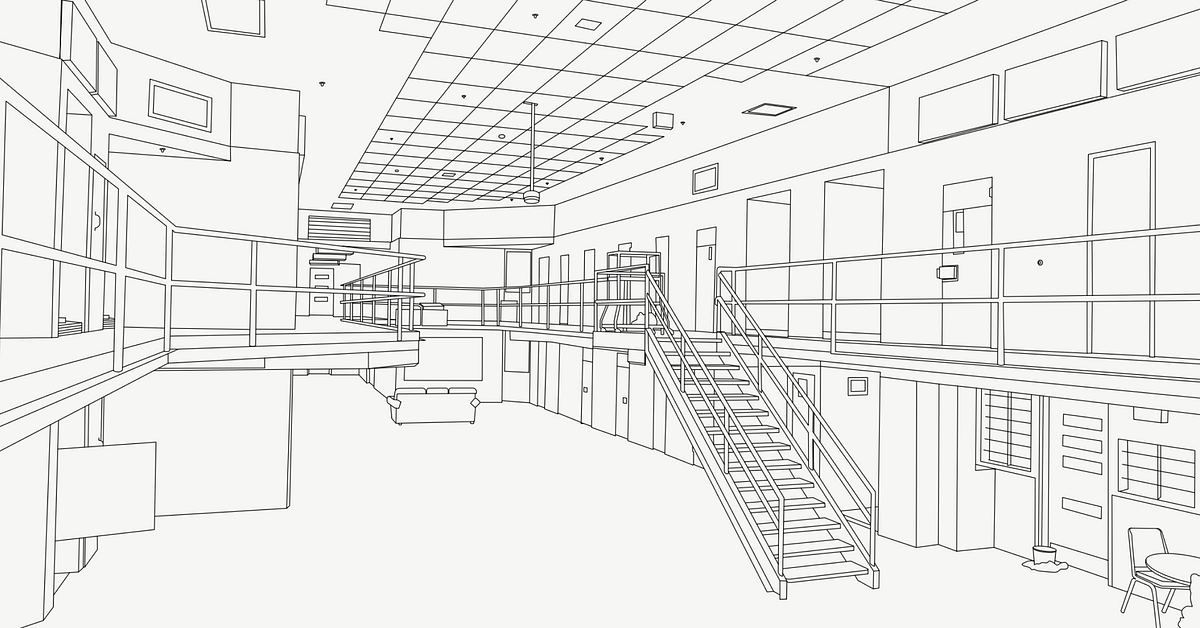 www.themarshallproject.org
www.themarshallproject.org
> Restoring Promise is a national initiative led by the Vera Institute of Justice, a New York-based nonprofit that partners with states on criminal justice reform programs. The first unit launched in Connecticut, a blue state, in 2017 — a moment when public officials across the left and right were talking about making prisons more rehabilitative. Soon after, Vera received applications for the program from several red states, including South Carolina. --- > Despite the buzz, these experiments remain drops in the ocean of America’s prisons and jails, which hold nearly 2 million people, often under conditions that can make the word “corrections” feel like a cruel joke. For all the tax dollars spent on them, U.S. “correctional facilities” seldom address the underlying problems — from a thin social safety net to rampant inequality — that drive crime. > > At the same time, programs like Restoring Promise must prove their value to maintain funding and withstand changing political views. Ever since the 1970s, when the sociologist Robert Martinson popularized the phrase “nothing works” in regard to prison programs, nonprofits and academics have struggled to prove that these efforts can reliably bring down arrests or convictions. But more recently, some researchers have begun to question if the problem is the focus on recidivism itself, which fails to account for problems people face when they return home. > > These questions may sound academic, but they’re actually about politics and money: Prison programs have to convince philanthropists, who spend hundreds of billions each year on healthcare and education but devote less than 1% of their funding to criminal justice. Such programs are also at the mercy of lawmakers and voters, who are as torn as ever about the purpose of prisons. Are they supposed to be punishing people or rehabilitating them? --- > By March 2019, all of the Restoring Promise participants had moved into their individual cells, which they were allowed to decorate extensively. Although they weren’t allowed to wear their own clothes like their German counterparts, they traded in orange jumpsuits for khakis and blue button-up shirts. They wrote house rules: no sagging pants, no do-rags before 4 p.m., no gossiping. > > To strengthen the mentees’ relationships to their families, the prison administration let parents, siblings and children enter the units and bring in personalized bedspreads. “We’d all sit in this living room area and take turns helping make each others’ beds,” Staton recalled. “We’d eat together, play games, even dance. It gave family members a sense of comfort.” > Many prison staff told me they were skeptical at first, but slowly warmed to the program. Among them was former Turbeville warden Richard Cothran, who spent most of his career with a punitive mindset but eventually came to question it: “Nobody ever said ‘Remember when I lashed out, and you put me in solitary confinement? That really helped!’” --- > In early 2020, Alexandra Frank, then-project director of Restoring Promise, was inundated with calls and emails from activists who said the corrections department had not made good on its promise to remove the metal plates it had placed over many cell windows, blocking out sunlight. The state corrections department said the plates were security measures meant to stop prisoners from signaling to people outside that it’s safe to throw contraband over fences. > > Activists pushed back, writing, “The idea of ‘Restoring Promise’ cannot be reconciled with a prison system where thousands of prisoners are not even given reliable daily access to sunlight.” (The state corrections department said they have since adjusted the plates so that everyone gets sunlight.) Frank, who has left Vera, had also tangled with agency leadership over security measures like deploying drug-sniffing dogs at the prisons.
 aeon.co
aeon.co
> But this is only part of the story, and it gets awkwardness wrong in important ways. Yes, awkwardness is caused by a failure to conform to existing social norms. But this failure isn’t individual and, rather than think in terms of awkward people, we ought to think in terms of awkward situations. And yes, awkwardness can be painful, and unpleasant. But it’s not embarrassing, and it’s nothing to be ashamed of. Contrary to popular belief, our awkward moments aren’t cringeworthy. Rather than cringing inwardly about them, we ought to examine them more closely. Because once we realise the true nature of awkwardness, we can stop seeing it as an individual failure and start seeing it as an opportunity for social change. In short: we should take awkwardness less personally, and more seriously.
When a child is born, the person giving birth is often subject to extremely harsh treatment – verbal humiliation, invasive practices, unnecessary medication, physical violence, and denial of treatment and pain relief are all commonplace before, during and after birth, both in Europe and across the globe. This can include a lack of informed consent when performing caesarean sections, episiotomy, induction and vaginal exploration, as well as verbal or discriminatory insults. Violation of human rights in this context has a name: obstetric violence. [...] **As a form of gender-based violence, obstetric violence is not exclusively intentional, nor does it always occur between individuals.** It is structural and intersectional, meaning that coercion and abuse can be indirect, anonymous and invisible, produced by the State and its institutions or by social norms. **It is rooted in complex political, social, cultural, and medical contexts**, meaning that working conditions, financial pressure, professional hierarchies and health education may encourage or enable it.
 filtermag.org
filtermag.org
> Every cell you’d go to, someone would be begging you for toilet paper or for water. These are “wet cells” with a sink and toilet, but the person inside can’t flush the toilet or open the faucet to get drinking water themselves; someone outside the cell has to press a button to do it. So as a fellow incarcerated person, who’d been in similar cells myself at previous facilities, I’d usually spend the next two hours walking back and forth filling up people’s cups from the mop sink, because it’s midday and there hasn’t been officer around since 5 pm yesterday. > > You can land in these cells for months for talking back to an officer, or being in a fight even if you were just defending yourself. If you have a mental health episode, or report that you were sexually assaulted, they might stick you in there for a year. Purportedly for your safety, but really to shut you up. These inequities are wielded most harshly against trans women of color like myself. > There should be an external civilian review board that audits the process, with members who rotate out every six or 12 months and are paid for their time. There should really be multiple boards—one for general housing conditions, one for use of force, one for mental health care, etc.
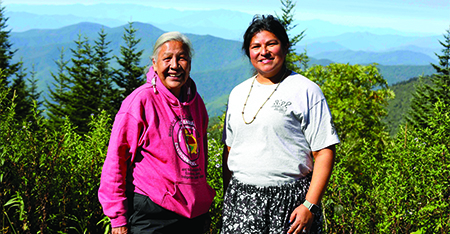 theonefeather.com
theonefeather.com
> The name of the third-highest summit east of the Mississippi River has been restored to its original name. The U.S. Board on Geographic Names (BGN) approved an application on Wednesday, Sept. 18, 2024 that restores the name of Clingman’s Dome, in the Great Smoky Mountains National Park (GSMNP), to its original Cherokee name, Kuwohi (mulberry place). > > Lavita Hill and Mary “Missy” Crowe, both members of the Eastern Band of Cherokee Indians (EBCI), started this effort in 2022 and received widespread support for the initiative.
[studiolo.online/2024/08/24/bor…](https://studiolo.online/2024/08/24/border-marks-a-project-at-the-border-of-cities-and-times/)
 worksinprogress.co
worksinprogress.co
Very long but also very interesting. Amazing how they're able to "open" and read carbonized scrolls.
 gamescriticism.org
gamescriticism.org
> While in recent years many European businesses have taken steps to alter their previously racist product designs, some games, especially board games like the popular Finnish Afrikan tähti (Star of Africa; Kuvataide, 1951), resist this trend. This raises two questions: First, what are the emotional mechanics which allow openly racist games like Afrikan tähti to remain unchanged and celebrated as ‘classics’ today? Secondly, what can our predominantly white board and role-playing game communities do to let go of emotional attachments to white supremacist games and become invested in a more respectful and welcoming games culture? > [...]we speculate on ways to expedite collective grief to help players reach what we term the ‘white acceptance stage’. We speculate that one useful design intervention to help rethink Afrikan tähti might be to classify it as a PEGI 18 game with the descriptor ‘discrimination’. Seen in this new light, the game might find a new purpose as a cultural educational item complementing lessons on Europe’s colonial past and the self-image of (Northern) Europe for older children. This intervention is inspired by the recent introduction of sensitivity warnings by multinational entertainment corporations such as Disney and broadcasting agencies like YLE (Rytsä, 2007). We argue that adopting such labeling practices for popular board games like Afrikan tähti can be a first step towards confronting racist and colonial ludic heritage.
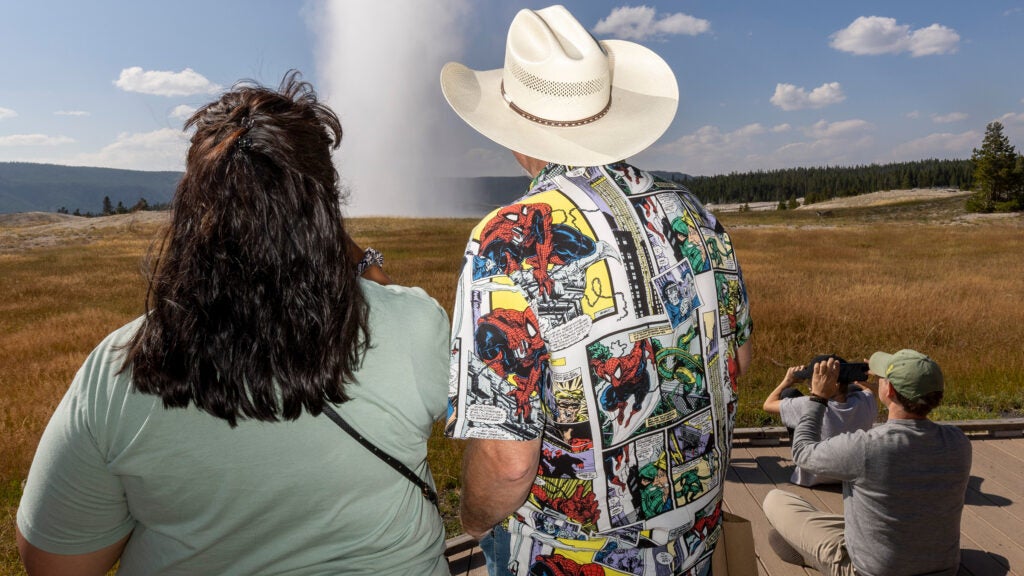 www.outsideonline.com
www.outsideonline.com
[archive.is link](https://archive.ph/hTh7o) > The U.S. has a near-infinite supply of clueless tourists such as myself, much to the dismay of our National Park Service. Yellowstone, our most famous national park thanks to Kevin Costner, welcomes 4.5 million of us each year. Like all of our parks, Yellowstone takes in tourists not only for the revenue but to remind them that the physical country they reside in is a marvel well beyond their comprehension. As such, Yellowstone is set up to accommodate these hordes. And while park officials do their best to keep tourists in line, often literally, my kind still manage to do plenty of tourist shit. We trample plant life. We get shitfaced and pick unwinnable fights with animals ten times our size. And we hurt ourselves. According to NPS data, at least 74 people have died while visiting Yellowstone in the past 15 years. I could have been one of those people. I deserve to be one of those people. > > This is why Outside sent me to the park just a few weeks ago, during one of the busiest times of the year. They wanted me to observe our most basic tourists in the wild. Maybe I’d even get to see one die. Or, even better for my editors, maybe I would die while I was there. Maybe I’d look down my nose at the tourists around me only to end up as wolf food myself. Like most other Yellowstone visitors, I was not trained for the outdoors, I relish doing shit that posted signs yell at me not to do, and I often daydream about fighting bears (and winning!). I find danger tempting, which isn’t a good thing given that I can no longer swim a single pool lap without taking a break. Are people like me responsible enough to visit one of our national treasures without breaking it? Do we, as a population, know how to do national parks?
[Archived version](http://web.archive.org/web/20240906110406/https://themoderatevoice.com/trumps-debate-tactic-a-flame-blower-of-lies-and-deception-known-as-the-gish-gallop/) You may not know the term ‘Gish gallop‘ but you’ve seen it in action if you have watched any Donald Trump performance. It is a firehose of lies and disinformation employed to sow chaos rather than educate. It is dishonorable. The technique is named for creationist Duane Gish who used it in his debates with biologists [and described in the Scientific American]. > His tactic consisted of talking fast and with confidence, bombarding opponents with falsehoods, non-sequiturs and enough cherry-picked factoids to confuse the audience. Scientists debating him faced the challenge of sifting half-truths from outright lies and finding the right evidence to refute them systematically, all within the few minutes allowed in response. [...] Nothing that Trump does is in good faith nor does he comport to norms. If that were the case, he would not still be trumpeting lies from eight years ago. This scenario sounds eerily similiar to how news organizations, “[d]espite eight years and two election cycles,” continue to normalize Trump’s speeches by providing a coherence that is missing from the original. [...] It is the news media’s job to point out untruths. Period. Not parrot them or slide them under the rug. Scientific American calls this integrity. I think of it as ethics. To that end, today’s journalists need to revisit the code of ethics of the Society of Professional Journalists: > Members of the Society of Professional Journalists believe that public enlightenment is the forerunner of justice and the foundation of democracy. Ethical journalism strives to ensure the free exchange of information that is accurate, fair and thorough. An ethical journalist acts with integrity (emphasis added).
> Jazmin Jones knows what she did. "If you're online, there's this idea of trolling," Jones, the director behind Seeking Mavis Beacon, said during a recent panel for her new documentary. "For this project, some things we're taking incredibly seriously ... and other things we're trolling. We're trolling this idea of a detective because we're also, like,ACAB." Her trolling, though, was for a good reason. Jones and fellow filmmaker Olivia Mckayla Ross did it in hopes of finding the woman behind Mavis Beacon Teaches Typing. The popular teaching tool was released in 1987 by The Software Toolworks, a video game and software company based in California that produced educational chess, reading, and math games. Mavis, essentially the "mascot" of the game, is a Black woman donned in professional clothes and a slicked-back bun. Though Mavis Beacon was not an actual person, Jones and Ross say that she is one of the first examples of Black representation they witnessed in tech. Seeking Mavis Beacon, which opened in New York City on August 30 and is rolling out to other cities in September, is their attempt to uncover the story behind the face, which appeared on the tool's packaging and later as part of its interface. > The film shows the duo setting up a detective room, conversing over FaceTime, running up to people on the street, and even tracking down a relative connected to the ever-elusive Mavis. But the journey of their search turned up a different question they didn't initially expect: What are the impacts of sexism, racism, privacy, and exploitation in a world where you can present yourself any way you want to? Using shots from computer screens, deep dives through archival footage, and sit-down interviews, the noir-style documentary reveals that Mavis Beacon is actually Renee L'Esperance, a Black model from Haiti who was paid $500 for her likeness with no royalties, despite the program selling millions of copies. [...] > In a world where anyone can create images of folks of any race, gender, or sexual orientation without having to fully compensate the real people who inspired them, Jones and Ross are working to preserve not only the data behind Mavis Beacon but also the humanity behind the software. On the panel, hosted by Black Girls in Media, Ross stated that the film's social media has a form where users of Mavis Beacon can share what the game has meant to them, for archival purposes. "On some level, Olivia and I are trolling ideas of worlds that we never felt safe in or protected by," Jones said during the panel. "And in other ways, we are honoring this legacy of cyber feminism, historians, and care workers that we are very seriously indebted to." > You can watch the trailer for "Seeking Mavis Beacon" on [YouTube](https://www.youtube.com/watch?v=ZNf86PZbsWQ). I had no idea "Mavis Beacon" wasn't a real person until well after graduating college.
 www.bbc.com
www.bbc.com
Almost 40,000 people died alone in their homes in Japan during the first half of 2024, a report by the country’s police shows. Of that number, nearly 4,000 people were discovered more than a month after they died, and 130 bodies went unmissed for a year before they were found, according to the National Police Agency. Japan currently has the world’s oldest population, according to the United Nations. The agency hopes its report will shed light on the country's growing issue of vast numbers of its aging population who live, and die, alone. Taken from the first half of 2024, the National Police Agency data shows that a total of 37,227 people living alone were found dead at home, with those aged 65 and over accounting for more than 70%.
 www.404media.co
www.404media.co
The 404 Media team wrote about what they learned in their first year of 404 Media, and it’s full of hope.
 www.thechatner.com
www.thechatner.com
An instant classic, Daniel Lavery’s How to win the battle against objects shares an extremely healthy strategy based on blaming an inanimate appliance and a person (who isn’t yourself) for anything inconvenient that happens to you. My partner and I have been practicing hard and I’m sorry to say they’re naturally gifted (and I’m naturally infuriated).
 www.thenation.com
www.thenation.com
This is a surprisingly interesting thinkpiece for its length that ultimately arrives at no conclusion, but it's an important discussion to be having while we still can.
 sojo.net
sojo.net
> But the thing that excites me most about taking public transit is watching the people who come in at every stop. It is exciting to recognize the middle schooler with the headphones, the young mother with the infant in a stroller, and the construction workers with their hard hats tucked under their arms. They are my neighbors. On public transportation, I am reminded that they are the people I am called to love.

